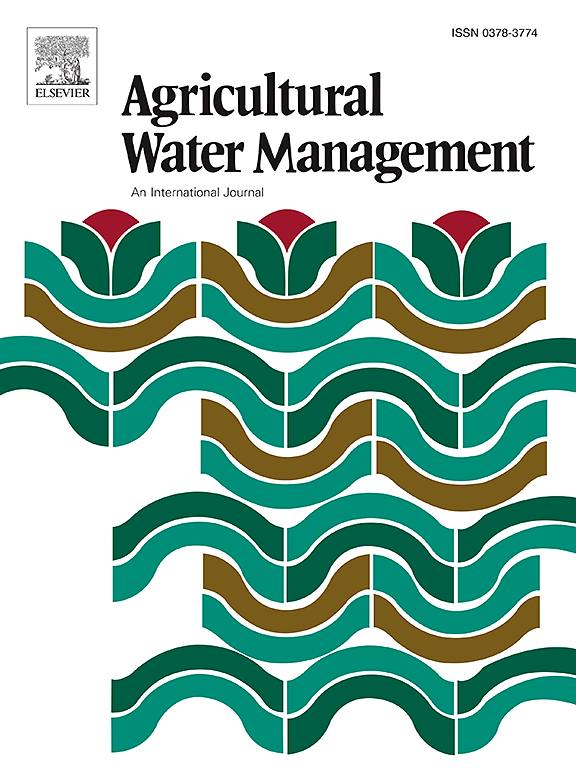Enhancing root-zone soil moisture estimation using Richards' equation and dynamic surface soil moisture data
IF 5.9
1区 农林科学
Q1 AGRONOMY
引用次数: 0
Abstract
Root-zone soil moisture (RZSM) is a critical variable for accurately modeling hydrological and ecological processes, but its monitoring is challenging due to the spatial and temporal variability at watershed scales. Richards' equation is a fundamental physical equation that accurately captures the dynamics of soil moisture transport in the root zone. However, due to its high sensitivity to input parameters, its application in large-scale spatial domains remains a significant challenge, particularly in regions with sparse meteorological data. This study addresses these challenges by proposing an innovative approach to estimating root-zone soil moisture by integrating dynamic surface soil moisture data into Richards' equation (SSMRE model). This approach encapsulates soil-atmosphere interactions using near-surface soil moisture, simplifying the computational framework and expanding the applicability of Richards' equation to broader spatial scales. Using the Lightning River Basin as a case study, simulations of different vegetation types and boundary conditions indicate that the correlation coefficient (R) for root zone soil moisture(50 cm) is generally greater than 0.7,SSMRE can accurately simulate root zone soil moisture under various lower boundary conditions and vegetation types. The HYDRUS-1D model, which is widely applied, typically uses atmospheric boundary conditions to simulate soil water movement under atmospheric influence. Comparative analysis of the HYDRUS-1D and SSMRE models against site-measured data reveals that for HYDRUS-1D, the correlation coefficients (R) across 5 cm,10 cm,20 cm,50 cm are 0.654, 0.621, 0.549 and 0.48, with root mean square errors (RMSE) of 0.03, 0.03, 0.03, and 0.04, respectively. The SSMRE model exhibits R values of 0.9, 0.85, 0.74, and 0.72, with RMSE values of 0.04, 0.02, 0.04, and 0.05. Demonstrating that our method provides improved accuracy in root-zone soil moisture simulations. The application of the Shuffled Complex Evolution-University of Arizona (SCE-UA) algorithm significantly enhances the model's accuracy. This research establishes a theoretical foundation for estimating multi-layer soil moisture over large spatial scales by integrating satellite-derived near-surface soil moisture data with Richards' equation.
求助全文
约1分钟内获得全文
求助全文
来源期刊

Agricultural Water Management
农林科学-农艺学
CiteScore
12.10
自引率
14.90%
发文量
648
审稿时长
4.9 months
期刊介绍:
Agricultural Water Management publishes papers of international significance relating to the science, economics, and policy of agricultural water management. In all cases, manuscripts must address implications and provide insight regarding agricultural water management.
 求助内容:
求助内容: 应助结果提醒方式:
应助结果提醒方式:


